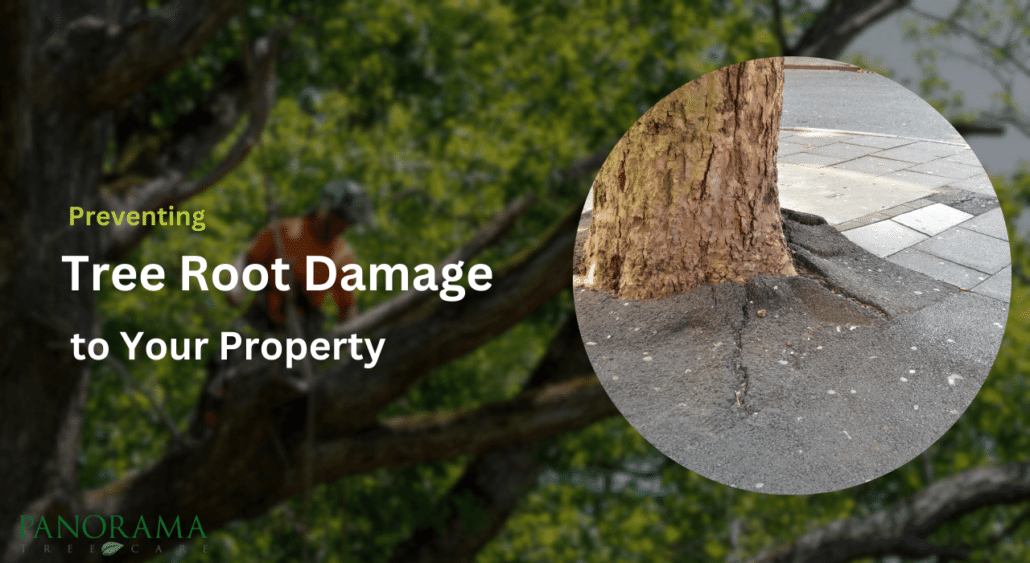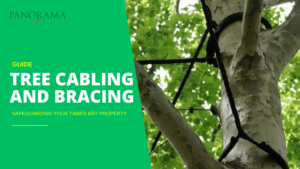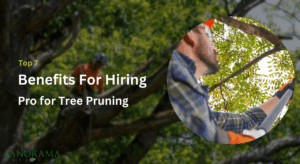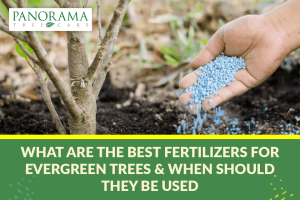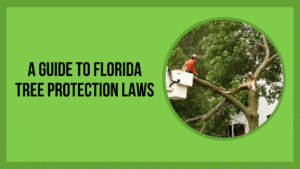Trees can significantly enhance the beauty and value of your property, but their invasive root systems can sometimes cause costly damage.
From cracked foundations and lifted sidewalks to clogged pipes and drainage issues, tree roots can wreak havoc if left unchecked.
This comprehensive guide will help you identify, prevent, and address tree root problems effectively.
Identifying Tree Root Problems
When it comes to identifying tree root problems, it’s essential to recognize the signs that indicate root damage may be occurring.
One common indication is cracked foundations, which can occur when tree roots exert pressure on the soil surrounding a building’s foundation, causing it to crack over time.
These cracks may start small but can worsen over time if left unaddressed, leading to structural issues.
Clogged pipes are also a telltale sign of root intrusion. Tree roots are naturally drawn to sources of moisture, and underground pipes provide an ideal environment for them to thrive.
As roots infiltrate pipes, they can cause blockages, leading to sewage backups and water damage.
Identifying the source of root intrusion is crucial for effective mitigation. However, this can be challenging as tree roots may extend far beyond the tree canopy and may not always follow a predictable path.
Utilizing techniques such as ground penetrating radar or root probing can help pinpoint the location of invasive roots.
Certain tree species are more prone to invasive root systems than others.
For example, maples and willows are known for their aggressive growth patterns and expansive root systems.
These trees can pose a higher risk of causing damage to nearby structures and infrastructure.
By recognizing the common signs of tree root damage and understanding which tree species are more likely to cause issues, property owners can take proactive steps to address root problems before they escalate.
This may include implementing preventive measures such as installing root barriers or choosing less invasive tree species for landscaping projects.
Preventing Future Root Damage
Proper Tree Selection and Placement
When planting trees on your property, it’s essential to consider the species’ growth characteristics and potential impact on surrounding structures.
Choosing tree species with non-invasive root systems or selecting appropriate planting locations can minimize the risk of future root-related issues.
For example, smaller trees or those with shallow root systems may be more suitable for planting near buildings or underground utilities.
Installing Root Barriers or Root Deflectors
Root barriers are physical barriers installed underground to redirect tree roots away from sensitive areas such as foundations, sidewalks, and underground pipes.
These barriers are typically made of materials like plastic or metal and are installed vertically to create a barrier that roots cannot penetrate easily.
Root deflectors work similarly but are installed horizontally to redirect roots in a specific direction.
Proper installation of root barriers or deflectors can effectively channel roots away from structures and prevent damage.
To avoid future complications, our tree root protection services Tampa include professional root barrier installation that shields foundations, pipes, and hardscapes from future intrusion.
Regular Tree Pruning and Root Management
Regular maintenance, including tree pruning and root management, is essential for preventing root-related problems.
Pruning helps control the size and shape of trees, reducing the likelihood of root overgrowth and invasive root systems.
Additionally, periodic root management practices such as root pruning or root collar excavation can help maintain a healthy balance between tree growth and root development.
By proactively managing tree growth, property owners can prevent root-related damage and promote the long-term health of trees and surrounding structures.
Safe Root Removal Techniques
Manual Methods
Manual root removal involves physically excavating the soil to expose and remove the intrusive roots. This can be done using tools such as shovels, picks, or root saws.
Digging is effective for smaller-scale root removal, especially when dealing with shallow roots or limited areas of damage.
Air spading is another manual method that uses compressed air to loosen soil around the roots, making it easier to access and remove them without causing damage to surrounding vegetation or structures.
Manual methods are suitable for smaller root systems or localized damage but may be labor-intensive and time-consuming.
Chemical Options
Chemical root removal involves the application of substances such as copper sulfate or rock salt to inhibit root growth or kill existing roots.
These chemicals are typically applied directly to the affected area or injected into the soil near the roots. While chemical options can be effective, caution must be exercised to prevent harm to surrounding vegetation and soil.
Overapplication or improper use of chemicals can lead to unintended consequences, such as soil contamination or damage to beneficial organisms.
It’s essential to follow manufacturer guidelines and consider the potential environmental impact when using chemical root removal methods.
Professional Services
For larger or more complex cases of root damage, hiring professional root removal services is advisable. Certified arborists or tree care professionals have the expertise, equipment, and experience to safely and effectively remove roots without causing further damage to trees or property structures.
Professional root removal services may utilize specialized equipment such as root grinders or hydro excavation tools to efficiently remove roots while minimizing disruption to the surrounding landscape.
By entrusting root removal to experienced professionals, property owners can ensure that the job is done safely and effectively, reducing the risk of future issues.
Repairing Root-Caused Damage
Assessment
The first step in repairing root-caused damage is to conduct a comprehensive assessment of the affected areas.
This involves inspecting foundations, sidewalks, driveways, and pipes to identify cracks, shifts, or other signs of damage.
In some cases, the extent of the damage may require the assistance of structural engineers or other professionals to assess the structural integrity of the affected structures.
Cracked Foundations
Cracks in foundations caused by tree roots can compromise the structural integrity of buildings and lead to further damage if left unaddressed.
Repairing cracked foundations may involve injecting epoxy or polyurethane foam into the cracks to stabilize and reinforce the foundation.
In more severe cases, foundation repairs may require excavation and underpinning to provide additional support.
When cracks in your foundation are caused by invasive roots, it’s important to consult certified root damage repair Tampa professionals who understand how to restore your structure without compromising surrounding tree health.
Lifted Sidewalks and Driveways
Tree roots can exert pressure on sidewalks and driveways, causing them to lift or buckle over time.
Repairing lifted sidewalks and driveways may involve removing sections of the pavement affected by root intrusion and resetting them to their original position.
In some cases, replacement of damaged sections may be necessary to ensure a level surface and prevent tripping hazards.
Damaged Pipes
Tree roots can infiltrate underground pipes, leading to blockages, leaks, or structural damage.
Repairing damaged pipes may involve cleaning out root intrusions using mechanical or hydro-jetting equipment.
In severe cases, pipe replacement may be necessary to restore proper drainage and prevent further damage to the plumbing system.
Restoring Landscaping
After root removal and repair work is complete, it’s essential to restore landscaping to maintain the aesthetic appeal of the property.
This may involve replanting grass, shrubs, or other vegetation that was removed or damaged during the repair process.
Proper landscaping can also help prevent future root-related issues by providing a barrier between trees and structures.
Protecting Trees During Root Removal
Root Pruning
While mitigating root damage, it’s crucial to preserve the health of trees whenever possible.
Techniques such as root pruning and root bridging can help minimize damage to trees during removal processes.
Consulting certified arborists for professional guidance ensures that the best practices are followed to protect both trees and property.
Alternative Solutions
In some cases, tree removal may seem like the only solution, but it should be considered as a last resort. Exploring root-friendly landscaping options, such as selecting less invasive tree species or creating designated tree zones, can help strike a balance between preserving trees and preventing damage. Adapting property designs to accommodate existing trees is another alternative worth exploring.
Conclusion
Addressing tree root damage starts with being proactive. From early detection to proper tree selection and effective root management strategies, taking action now can save you from costly repairs down the road.
At Panorama Tree Care, we specialize in helping Tampa property owners protect both their landscapes and structures through expert root assessment, barrier installation, and targeted solutions.
Contact us today to schedule a consultation and get peace of mind knowing your trees and property are in expert hands.

